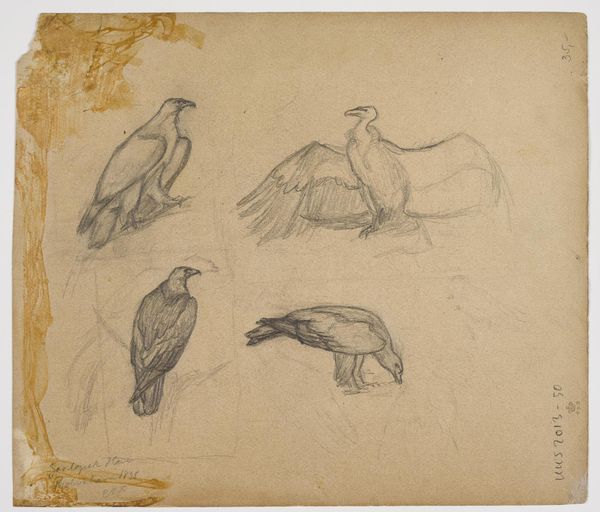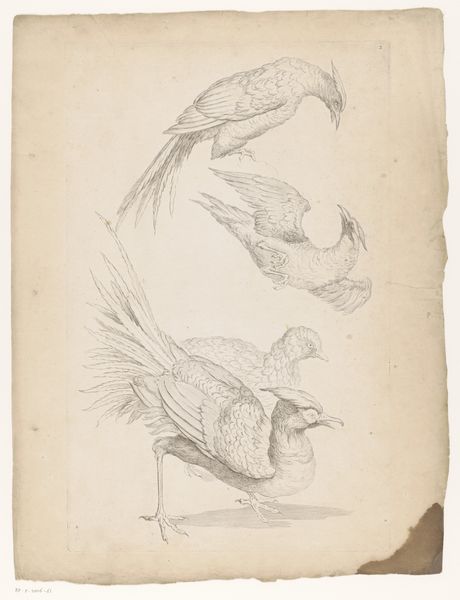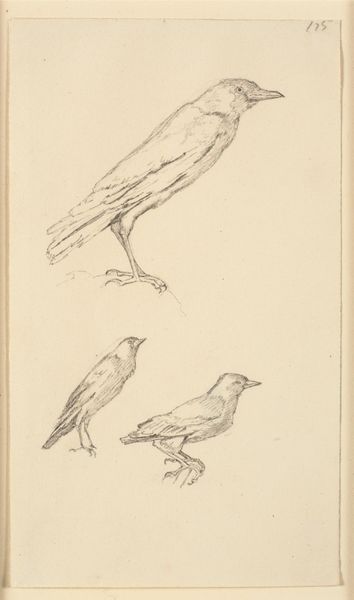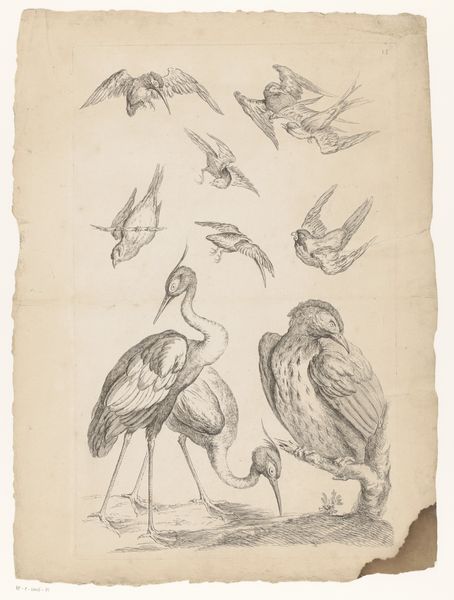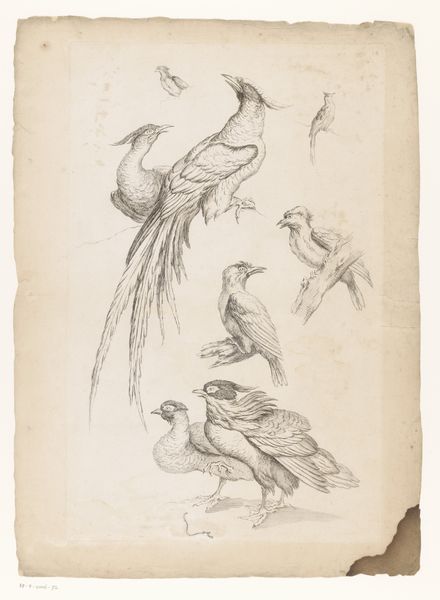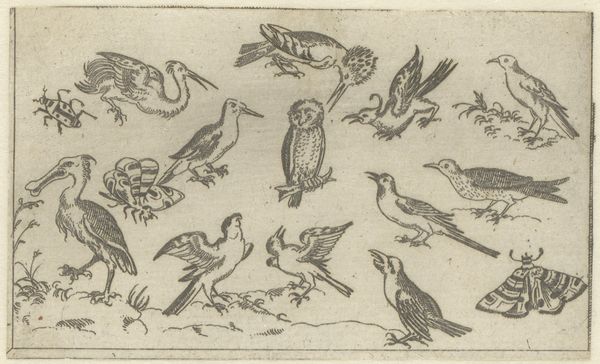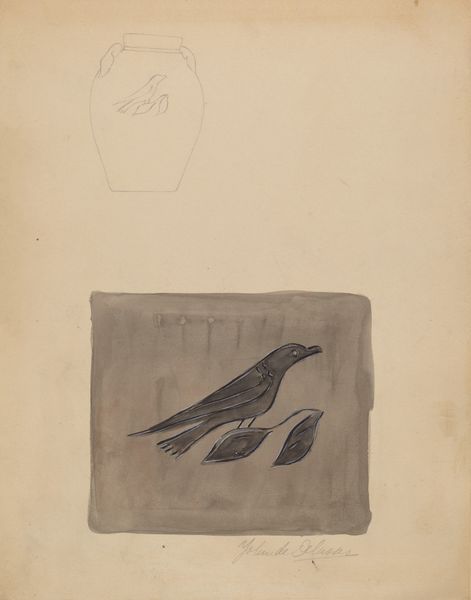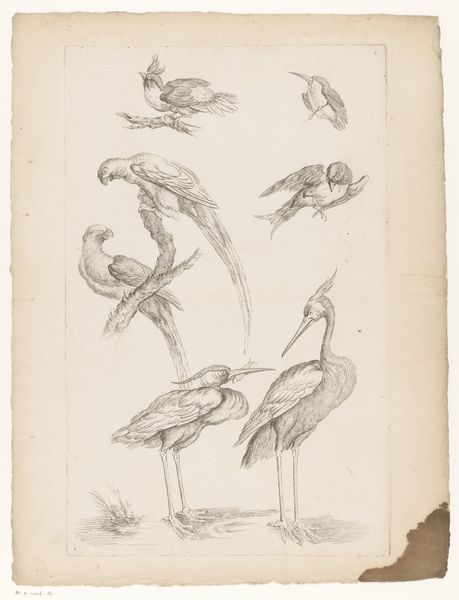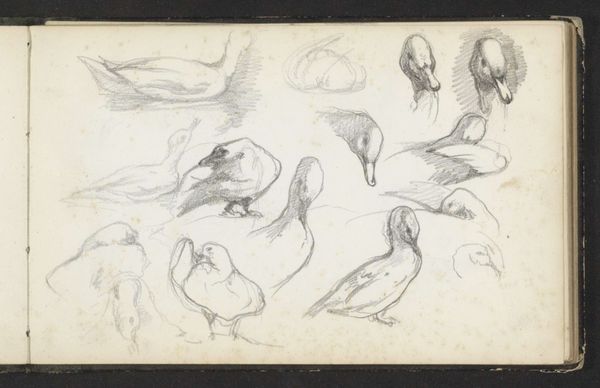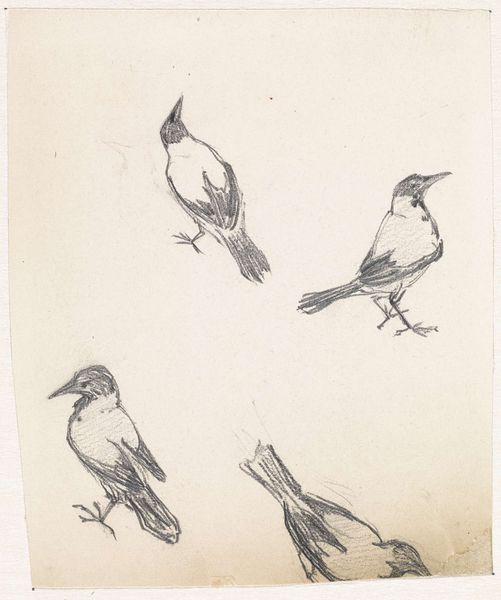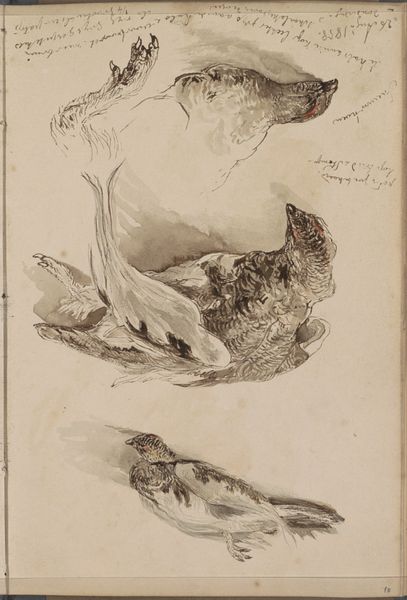
drawing, ink
#
drawing
#
ink painting
#
figuration
#
ink
#
coloured pencil
#
naturalism
Dimensions: height 92 mm, width 122 mm
Copyright: Rijks Museum: Open Domain
Editor: Here we have Johannes Tavenraat's "Two Studies of a Dead Snipe," potentially from 1868, rendered in ink. There's something unsettling, yet undeniably precise, about how the artist captured these lifeless birds. How do you interpret this work within its historical context? Curator: Considering the 19th century’s fascination with naturalism and scientific observation, this drawing participates in a larger cultural impulse. Museums and academic institutions increasingly emphasized detailed visual documentation. Does the choice of a 'dead' snipe intrigue you at all? Editor: Well, it feels a bit morbid, I guess? Not your typical picturesque landscape. Was there a social or political statement embedded in depicting dead animals? Curator: Perhaps not a direct "statement," but think about what capturing the natural world in such a stark way might communicate. Land ownership and game hunting were potent symbols of status. Reflecting on its creation, consider the growth of natural history museums at the time, institutions increasingly tied to colonial exploitation and a very particular view of nature. What impact do you think such displays of natural subjects have on the wider society of the period? Editor: That's a very dark framing of Naturalism; viewing it as part of broader institutional forces like colonialism provides a fresh and somewhat sinister context. It seems less like simple observation, more like appropriation. Curator: Precisely! The act of representing something, especially in an official context like a museum, always involves selection, interpretation, and implicitly, power. We gain a more complete understanding once these elements are addressed and included in how we interpret it. Editor: I’ll never look at a nature drawing the same way again! Thanks for shining light on how these socioeconomic contexts influence these beautiful and engaging displays of naturalism.
Comments
No comments
Be the first to comment and join the conversation on the ultimate creative platform.
